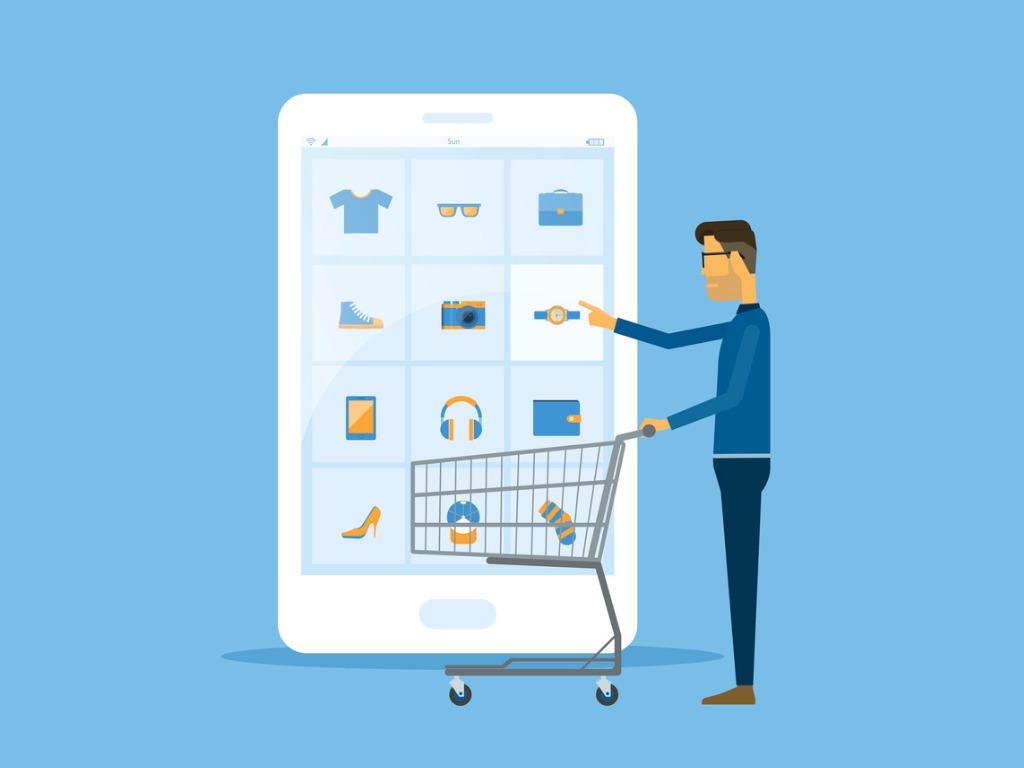Crunchbase News checked in with experts in the consumer product space who said now is a good time to start a brand.
Subscribe to the Crunchbase Daily
They also discussed what the hot categories are, direct-to-consumer versus traditional distribution channels, and challenges startups face breaking into the consumer/household products business.
Hot categories
Over the past five years, many new brands have entered the consumer electronics space. But on the consumer goods side, beauty and cosmetics, drones, and shoes are the most popular, according to Crunchbase data.
Maveron is a consumer-only venture capital firm. David Wu, general partner, told me that almost every consumer category saw consumer spending go down during COVID-19’s shelter-in-place mandates.
However, he also said there is opportunity for growth as grocery, digital entertainment and cleaning supplies provide promise.
“In a lot of ways, you are seeing online food and groceries take off, accelerated by consumers who are normally creatures of habit, but are now much more open to trying new things,” he said. “For companies, such as Instacart, it is going to be interesting to see what happens when the world opens back up and grocery stores have a chance to delight customers again with value.”

While some luxury items are coming back, the most popular goods are in the value and lower price points, he said. In particular, success in the digital entertainment area will depend on whether consumers have money to spend there, he added.
Now, Maveron is looking at startups focused on senior care, the omnichannel world, and e-commerce in lower price points, Wu said.
“I am seeing a reinvention of entertainment, where there is more use of social networks and their live platforms, as well as demand for gaming and opportunities to experience digitally together,” he added. “Health care is changing as people are taking responsibility into their own hands. We are seeing a huge shift in mental health and prescription drugs.”
Over at CircleUp, which invests in early-stage consumer brands, managing director Pat Robinson said personalization is everywhere. This is especially true in two areas he has invested in: personal beauty products and pet food. The firm made investments in personalized hair care product Function of Beauty in 2017 and in personalized pet food provider NomNomNow in 2018.
“This has been a trend we have talked about a lot; having one company tailor and customize its products to unique consumer needs,” Robinson said. “We saw this start in fashion and apparel, where consumers’ needs are aesthetic, such as designing their own Nike shoes. Vitamins and supplements, the pet space, and the skin-care space are trying to optimize these needs. Startups might be hitting a tipping point getting to scale, but many consumers default to thinking in these terms.”
Direct-to-consumer vs. traditional distribution
Whether a startup should go direct-to-consumer or utilize traditional distribution channels is subjective.
(Sidenote: I’ve been told many startups are taking the direct-to-consumer route, especially if they are unable to secure capital to scale right away.)
Many startups mistakenly choose one path over another when they need to be more flexible, said CircleUp’s Robinson.
Historically it took a direct-to-consumer brand five years to get into retailers, but with the right omnichannel, or cross-channel strategy, brands can accomplish that by year two or three, he added.
By going directly to the consumer, the company can speak to buyers and get feedback, which works well when launching a first product or finding a target market. However, there is a downside.
“Operating a business this way is complex, it takes overhead, and you have to account for things like product returns,” Robinson said.
Likewise, there are advantages to the offline world, he said. For example, big-box retailers shelve lots of brands, enabling customers to find what they need in one shopping trip as well as have opportunities to discover new brands.
Omnichannel is the way to go, in Wu’s opinion. He expects everything, over time, to be one click away.
“It’s a magical time to be an end consumer,” he said. “Twenty years ago, when you would buy an item maybe only one retailer had it. Now there are hundreds of companies ready to fulfill the product you want, differentiated by what the brand and value mean to you.”
For Jordan Nathan, founder of ceramic cookware maker Caraway, a direct-to-consumer approach was the avenue to target the home cook.
“Our brand was launched around safety and design, so having a website and ads that tell that story made sense for us,” he said. “Direct-to-consumer is good, but as we expand, we do see going omnichannel and brick-and-mortar as well.”
Challenges to breaking into the business
There’s always a chance that a business model doesn’t fit the venture capital model, Wu said. However, companies that have the right teams, skills and drive can be a big break-out consumer brand.
Over the last five years, $34.7 billion of venture-backed dollars were pumped into 3,368 consumer electronics and goods deals, according to Crunchbase data. Funding is expected to be less this year, given the COVID-19 pandemic, which shows in this year’s data. Midway through 2020, only $1.1 billion was invested in 139 deals, as of June 26.

Raising funds and recruiting for his startup was “next to impossible,” said Caraway’s Nathan. Especially the first round. In May, the 2-year-old company raised a $5.3 million seed round to expand into new product categories and focus on distribution over the next year, he said.
“The funding environment became difficult. Every month that goes by with no sales, no product, no branding, it becomes harder to recruit people,” he said. “I was a founder interviewing candidates in a coffee shop, and you can’t pull in the people you want because you only have so much money or people to execute on your plan.”
Manufacturing costs are another hurdle, Robinson said. Historically, a brand was the only one that could manufacture its product. But in the last 20 years there has been growth in manufacturing partners, and now there are family-owned manufacturers catering to third parties, he said.
This approach has upsides and downsides.
“Those labs are used to working with large companies, so finding space to get your product done is difficult and expensive,” said Robinson. “The challenge is finding the right manufacturing partner at the start, and the flipside is making sure, as you grow the company, that manufacturing partner can grow with you. You have to make sure you get that right because it is pretty painful to fix if you have to.”
Despite challenges, it has never been a better time to enter the consumer products category and start a new brand, he said.
There is an opportunity to solve some of the early-stage financial problems, as well as distribution, in ways that the big brands–such as Procter & Gamble and Unilever–have not been able to solve, he said.
“It’s a good time to start a brand, and we are excited about the continued innovation in the U.S., which has been so lacking over the past 20 years,” he added. “In the short-term, some direct-to-consumer brands didn’t have the financial outcomes we expected, others raised too much money, and some saw manufacturing challenges at the early stage, but consumers are demanding innovation and better products, and have unique problems yet to be solved.”
Illustration: Li-Anne Dias

Stay up to date with recent funding rounds, acquisitions, and more with the Crunchbase Daily.










67.1K Followers